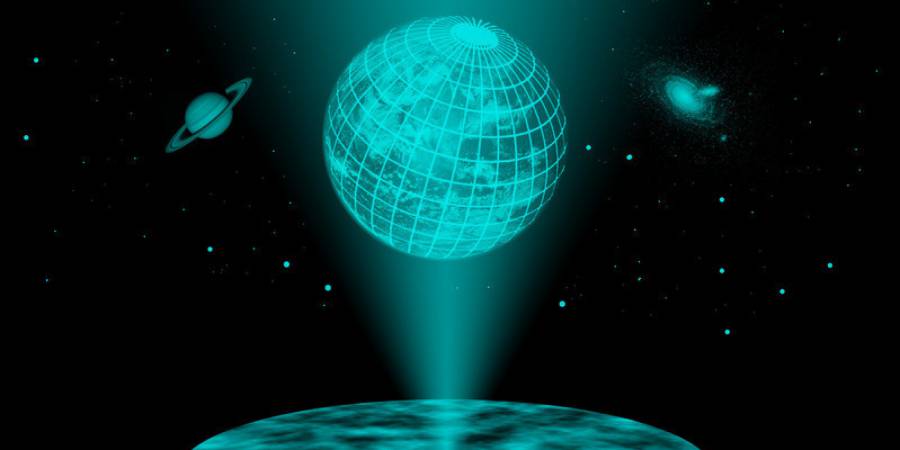A team of scientists claims the universe could be a “vast and complex hologram,” according to a study published last week in the Physical Review Letters Journal.
The holographic universe theory has been long hanging around the scientific community, but now a group of researchers from five different institutions in three countries says they have found evidence that this is the case.
With Kostas Skenderis leading the way, scientists have analyzed the afterglow of the Big Bang and concluded that data within the ancestral white noise indicates gravity is not the way we perceive it, making the universe itself different from the 3D model we so far believe it to be.

What is the holographic universe theory?
First proposed by Leonard Susskind during the 1990s, the holographic universe theory poses that space could be somehow mathematically “encoded” in two dimensions instead of three.
We, humans, perceive space and think of it in terms of three dimensions: height, width, and depth. However, under the holographic principle, depth is a flat surface that gives the illusion of a third dimension.
That, of course, does not apply literally to the universe. There are mathematical foundations and even quantum gravity theories lying underneath the theory, but a similar phenomenon could be occurring in the background of space.
Understanding a two-dimensional universe
The team of astrophysicists from the University of Southampton, the University of Waterloo, the University of Salento and two others proposes that the universe works much like the hologram image on a credit card.
Observable space background, as far as the eye can see through existing telescopes, might be a 3D projection of a 2D image. Researchers reached this conclusion after comparing previously undetected white noise data with quantum field theories.
“IMAGINE THAT EVERYTHING YOU SEE, FEEL, AND HEAR IN THREE DIMENSIONS, AND YOUR PERCEPTION OF TIME, IN FACT, EMANATES FROM A FLAT TWO-DIMENSIONAL FIELD. HOWEVER, THIS TIME, THE ENTIRE UNIVERSE IS ENCODED,” said Professor Kostas Skenderis.
These ideas represent an alternative to the traditional understanding of the universe as an ever-expanding entity based on gravity as we know it. How the holographic universe works or how it could be explained in simpler yet accurate terms is up to quantum physicists to figure out.
Implications of this two-dimensional model include a complete rethinking and restructuring of our perception of life as we know it, since we could, technically, think of things such as time and gravity as existing in a 2D continuum.
Source: Physical Review Letters












